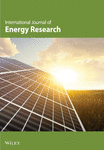R22-E181 absorption water chilling package thermodynamics and performance in the range of ARI 560-2000 standard rating conditions
Abstract
The purpose of this work is the thermodynamic analysis and the performance prediction of R22–E181 absorption water chilling package for standard rating conditions according to ARI 560-2000. The analysis is based on the description of the exact thermodynamic cycle plotting the enthalpy–mass fraction and the temperature–enthalpy charts. The thermodynamic properties of the R22–E181 are given in a new set of equations using extended experimental data from the literature.
A step-by-step calculation model was established in order to predict the characteristic points of the thermodynamic cycle of the R22–E181 ARU and to simulate its performance.
The influence of the ambient conditions on the operation of the ARU is shown graphically when the saturated condensing temperature ranges from 30 to 45°C. Regression analysis is carried out to express the actual coefficient of performance and the cooling load as functions of the condenser temperature and the absorber–condenser temperature difference.
According to ARI Standard 560-2000 for an absorption water chilling package, it has been found that the integrated part-load value of the COP ranges from 53 to 60%. When the saturated condensing temperature is 41.1°C, the saturated evaporating temperature is 4°C and the ABS/COND temperature difference ranges from 6 to 9°C. The decrease of the chilled water temperature passing through evaporator is 5.6°C. Copyright © 2004 John Wiley & Sons, Ltd.




